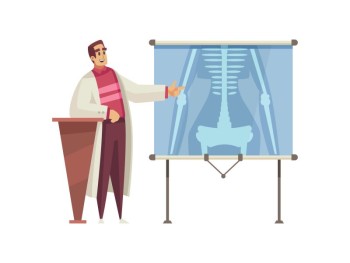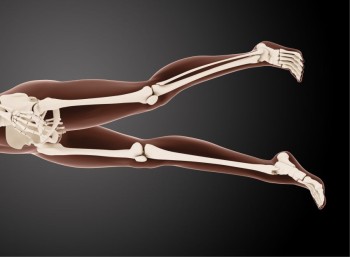
X-ray imaging plays a pivotal role in assessing the health of the musculoskeletal system, particularly the shoulder, elbow, and wrist joints.
Shoulder, Elbow and Wrist Joint X-ray AP & LAT View with Cost
Insights into Shoulder, Elbow, and Wrist X-rays:
Navigating the AP & Lat Views
Introduction
X-ray imaging plays a pivotal role in assessing the health of the musculoskeletal system, particularly the shoulder, elbow, and wrist joints. This guide will explore the purpose, preparation, and interpretation of X-rays focusing on the Anteroposterior (AP) and Lateral (Lat) views for these critical upper extremities.
Purpose of Shoulder,
Elbow, and Wrist X-rays
X-rays of the shoulder, elbow, and wrist are instrumental in diagnosing a range of conditions, from fractures and dislocations to arthritis and soft tissue injuries. Understanding the specific purpose of these X-rays is crucial for effective medical evaluation.
Preparation for the X-ray
Proper patient positioning is essential for obtaining accurate images of the shoulder, elbow, and wrist. Radiographers ensure that patients are comfortably positioned to capture detailed and clear X-ray images.
Understanding AP Views
Shoulder X-ray - AP View
In the Anteroposterior view for the shoulder, the patient faces the X-ray source with the arm in a neutral position. This view provides a frontal perspective, allowing for the assessment of the shoulder joint's alignment and structures.
Elbow X-ray - AP View
Similarly, for the elbow, the patient's arm is extended with the palm facing upward during the Anteroposterior view. This captures the alignment of the elbow joint and associated structures.
Wrist X-ray - AP View
In the wrist's Anteroposterior view, the hand is positioned with fingers extended and the palm pressed against the imaging surface. This provides a clear image of the wrist joint and surrounding bones.
Interpretation of AP Views
Radiologists analyze AP views to identify fractures, dislocations, joint space abnormalities, and signs of degenerative conditions. The information derived from these views is crucial for formulating accurate diagnoses.
Significance of Lat Views
Shoulder X-ray - Lateral View
For the Lateral view of the shoulder, the patient stands or sits sideways to the X-ray source. This view provides a side perspective, offering insights into the shoulder joint's depth and structures not visible in the AP view.
Elbow X-ray - Lateral View
In the Lateral view of the elbow, the arm is flexed at a right angle, and the palm faces downward. This angle captures the lateral aspect of the elbow joint, revealing additional details not seen in the AP view.
Wrist X-ray - Lateral View
The Lateral view of the wrist involves positioning the hand with fingers extended and the palm facing sideways. This view allows for a comprehensive assessment of the wrist joint's lateral structures.
Analyzing Lat Views
Healthcare providers carefully analyze lateral perspectives to detect abnormalities, assess joint spaces, and identify issues such as bony growths or soft tissue injuries. The combination of AP and Lat views ensures a thorough evaluation.
When Shoulder, Elbow,
and Wrist X-rays are Recommended
These X-rays are recommended in various scenarios, including:
Traumatic injuries
Chronic pain
Evaluation of joint degeneration
Preoperative assessments
Safety Measures During X-rays
Stringent safety measures, including minimizing radiation exposure and using lead shielding, are implemented to ensure patient safety during shoulder, elbow, and wrist X-rays.
Comparison with Other Diagnostic Tools
While X-rays provide valuable information, they are often complemented by advanced imaging modalities such as MRI or CT scans for a more detailed assessment of soft tissues and ligaments.
Role in Injury Assessment
In cases of injury, X-rays help assess the extent of damage, identifying fractures, dislocations, or joint abnormalities. This data is essential for formulating a suitable course of treatment.
Common Challenges in Interpretation
Interpreting X-rays of the shoulder, elbow, and wrist comes with challenges, including overlapping structures. However, advancements in imaging technology and skilled radiologists aid in overcoming these challenges.
Future Developments in Upper Extremity Imaging
As technology advances, the future holds promise for enhanced imaging techniques, potentially providing even clearer and more detailed images for precise diagnoses.
Patient Experience and Feedback
Understanding the patient's perspective is vital. Sharing patient experiences and testimonials can alleviate anxiety, making the process of undergoing shoulder, elbow, and wrist X-rays more comfortable.
Conclusion
In conclusion, X-rays of the shoulder, elbow, and wrist, with both AP and Lat views, are essential tools in orthopedic diagnostics. From detecting fractures to assessing joint health, these X-rays play a crucial role in ensuring comprehensive evaluations and effective medical interventions.
FAQs (Frequently Asked Questions)
Are X-rays of the shoulder, elbow, and wrist painful?
No, X-rays are non-invasive and generally painless. Patients may need to hold specific positions for a short duration during the procedure.
How long does it take to get results from these X-rays?
Results are typically available shortly after the imaging procedure, and healthcare providers discuss them during a follow-up appointment.
Can these X-rays be performed on children?
Yes, X-rays of the shoulder, elbow, and wrist can be performed on children. Precautions are implemented to reduce radiation exposure to a minimum.
Do these X-rays detect conditions like arthritis?
Yes, these X-rays are effective in detecting signs of arthritis, including joint space narrowing and bony changes.
Can X-rays of the shoulder, elbow, and wrist be done during pregnancy?
While precautions are taken to minimize radiation exposure, pregnant individuals should inform their healthcare provider before undergoing X-rays.
How often are X-rays of the shoulder, elbow, and wrist recommended for
chronic conditions?
The frequency of X-rays depends on the specific condition and the treatment plan. Healthcare providers order X-rays as needed for diagnosis, monitoring, or follow-up assessments.
Can X-rays of the shoulder, elbow, and wrist detect soft tissue injuries?
X-rays primarily focus on bones and may not clearly show soft tissues. However, they can indirectly indicate soft tissue injuries by revealing changes in joint alignment or space.
Is sedation required for children undergoing X-rays of the upper
extremities?
In most cases, sedation is not necessary for children undergoing these X-rays. The procedure is quick, and children are usually able to cooperate without sedation.
Can X-rays of the shoulder, elbow, and wrist reveal signs of nerve
compression?
X-rays primarily capture bony structures, and signs of nerve compression may not be evident. Additional diagnostic tests like MRI are more suitable for assessing soft tissues and nerves.
Are there age limitations for X-rays of the upper extremities?
X-rays of the shoulder, elbow, and wrist can be performed at any age, and there's no specific age limitation. The necessity is determined based on clinical indications.
Do X-rays of the upper extremities require any special diet preparation?
Generally, X-rays of the upper extremities do not require special diet preparation. Patients are usually instructed to eat and drink normally unless advised otherwise by their healthcare provider.
Can X-rays of the shoulder, elbow, and wrist identify fractures that are
not immediately visible?
X-rays are effective in detecting most fractures, but some hairline fractures or those hidden by overlapping structures may require additional imaging techniques for confirmation.
What happens if I move during the X-ray procedure?
Patient cooperation is crucial for clear images. If unintentional movement occurs, the radiographer may need to repeat the X-ray to ensure accurate results.
Can X-rays of the upper extremities be done in emergency situations?
Yes, X-rays of the shoulder, elbow, and wrist can be performed promptly in emergency situations to assess and diagnose injuries for immediate medical intervention.
(0)
Login to continue



